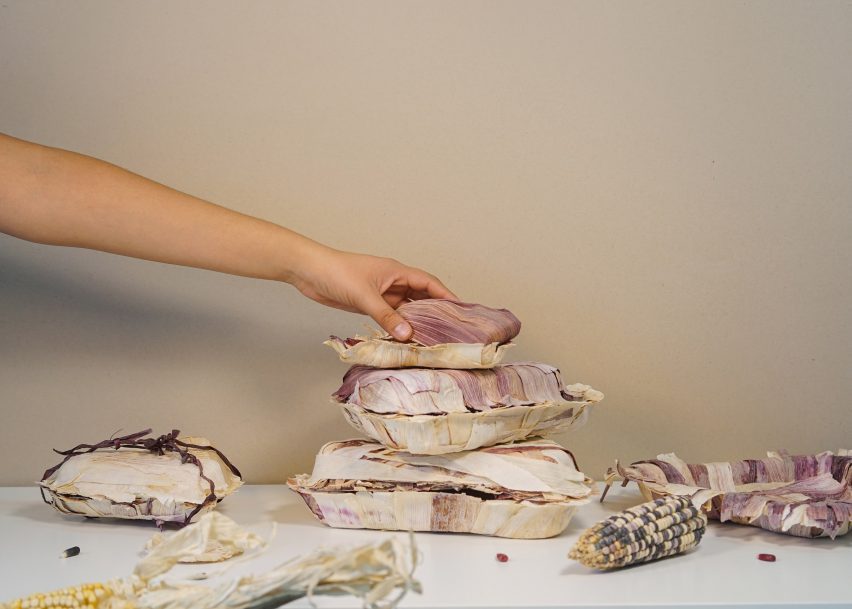Five designers in Mexico exhibit new uses for biomaterials
An exhibition in Mexico curated in collaboration with Danish research lab Space10 has showcased five novel uses for local biomaterials.
Called Deconstructed Home, the exhibition was set up as part of a two-week programme organised by Space10, a research arm of IKEA. The lab gave five designers six weeks of experimentation and research to conceptualise “new possibilities and uses for a local biomaterial”.
The materials ranged from beeswax to soil and the final projects will travel throughout Mexico after the initial exhibition at LOOT, a gallery in Mexico City, which took place 26 March to 9 April 2022.
“The recent pandemic has highlighted flaws in our global supply chain, and the ongoing climate emergency has revealed further issues with the way we manufacture and transport materials and products around the world,” said Elsa Dagný Ásgeirsdóttir, lead creative producer at Space10.
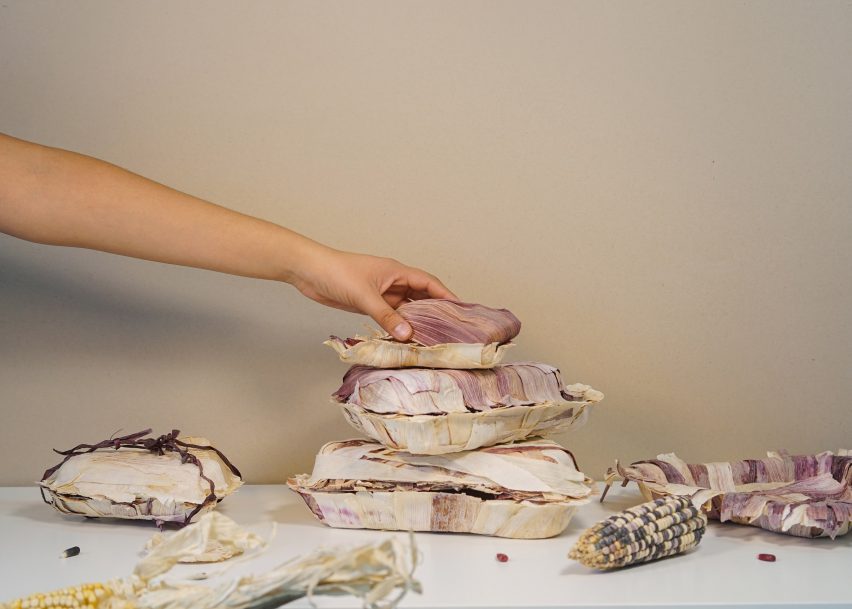
Articles of Protection by Taina Campos
Taina Campos worked with corn from the Milpa Alta, a neighbourhood in Mexico City. The design brief required collaboration with Mujeres de la Tierra, a local community organisation.
The organisation helps women become financially independent through the selling of food and they wanted non-plastic vessels. Campos used waste from the corn harvest in order to produce these vessels for Articles of Protection.
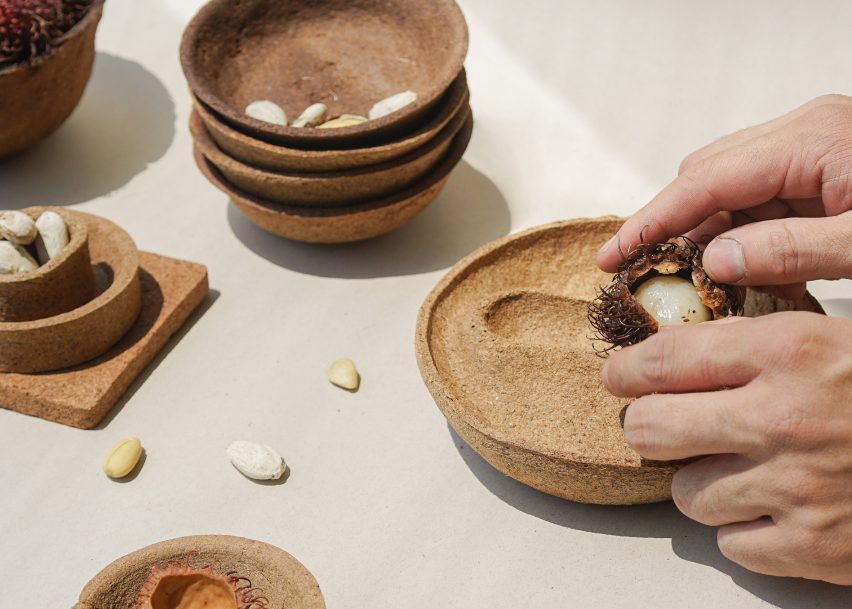
Migrating Objects by Bertín López
The rambutan is a plant native to southeast Asia that moved into Mexico in the 1950s.
Using the plant in the state of Soconusco, Bertín López came up with a line of home goods. The project shows the potential usages of migrating species that come to play a role in local ecosystems.
“What was once foreign has become part of the local identity,” said López in a design statement.
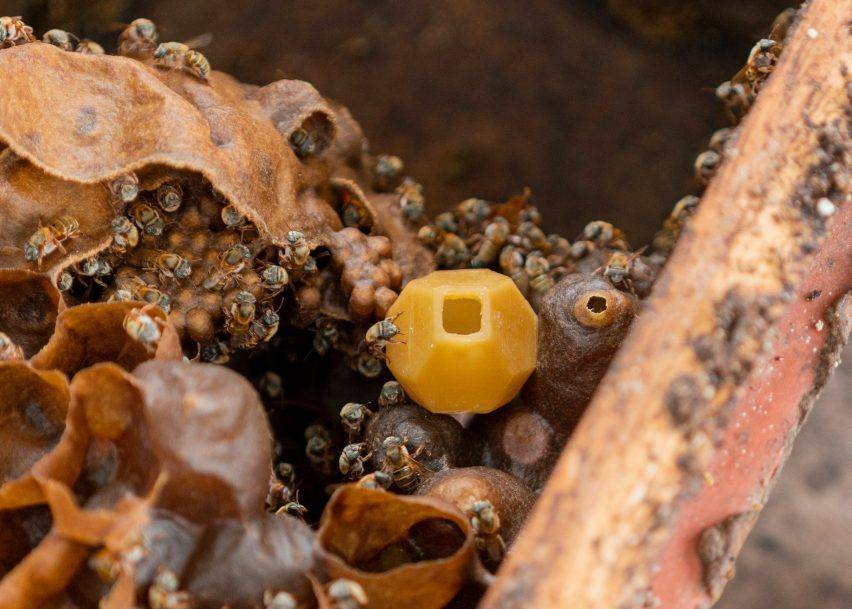
Homes for Honey by Gabriel Calvillo
Taking note of the dwindling populations of the melipona, a stingless bee native to Yucatán, Calvillo drew on Mayan apiary techniques used for millennia.
The designer used beeswax from the bees to mould potes and piqueras for what he calls an “interspecies collaboration”.
The structures are prefabricated hives that the bees can inhabit and then finish the construction.
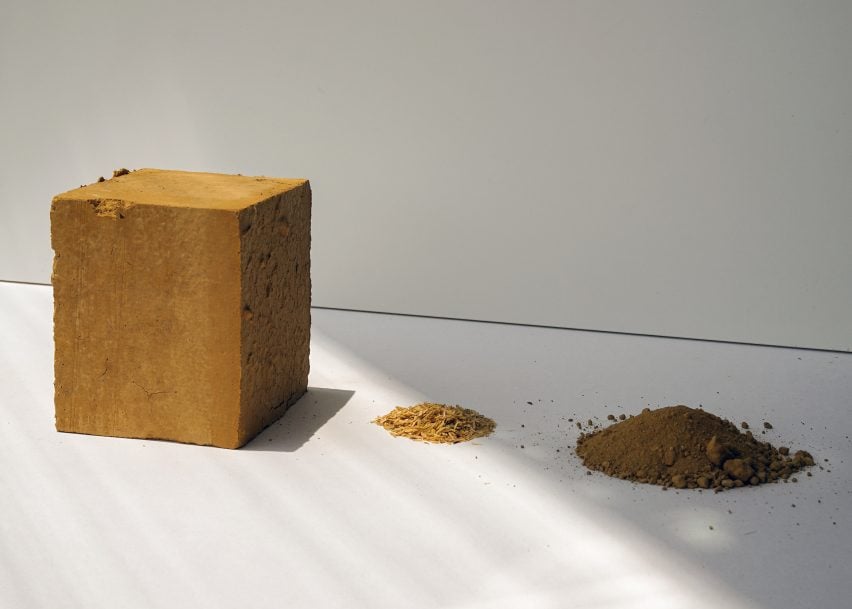
Building with Earth by Karen Kerstin Poulain
Designer Karen Kerstin Poulain chose to work with the soil of Naucalpan for her project.
The result was a composite material made by combining tepetate (volcanic soil), water, rice husk in order to reduce energy usages and resource exhaustion in concrete while also taking advantage of agricultural waste.
“To build affordable housing, we need alternative methods and liquid soil has great potential,” said the designer.
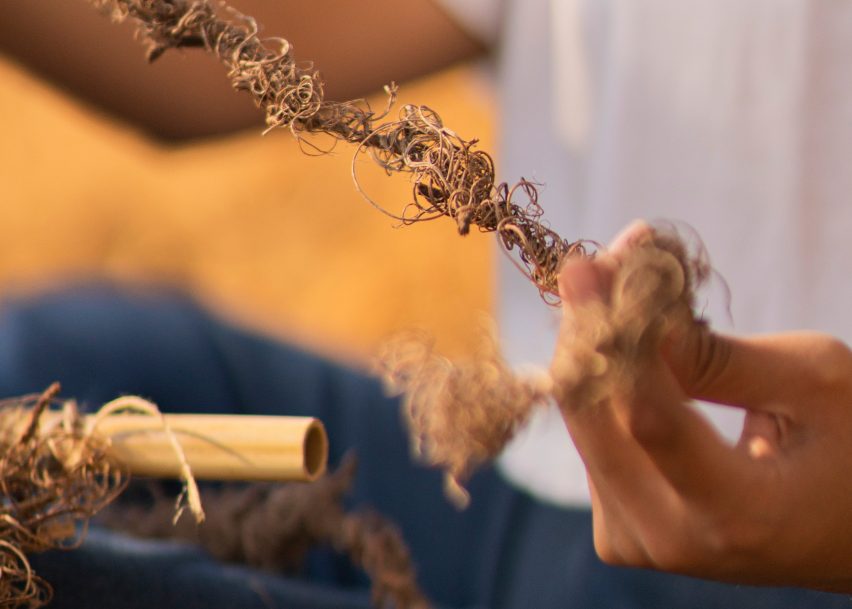
Weaving Heirlooms by Paloma Morán Palomar
This project uses the fibres of the tamarind in order to create a type of thread.
The husks of the tamarind are often discarded so Palomar, working in her native Jalisco, decided to use the thread to weave rugs.
By using the materials on top of traditional weaving techniques, the design manages to be novel in material usage while drawing on indigenous techniques.
The photography is by Almendra Isabel.

